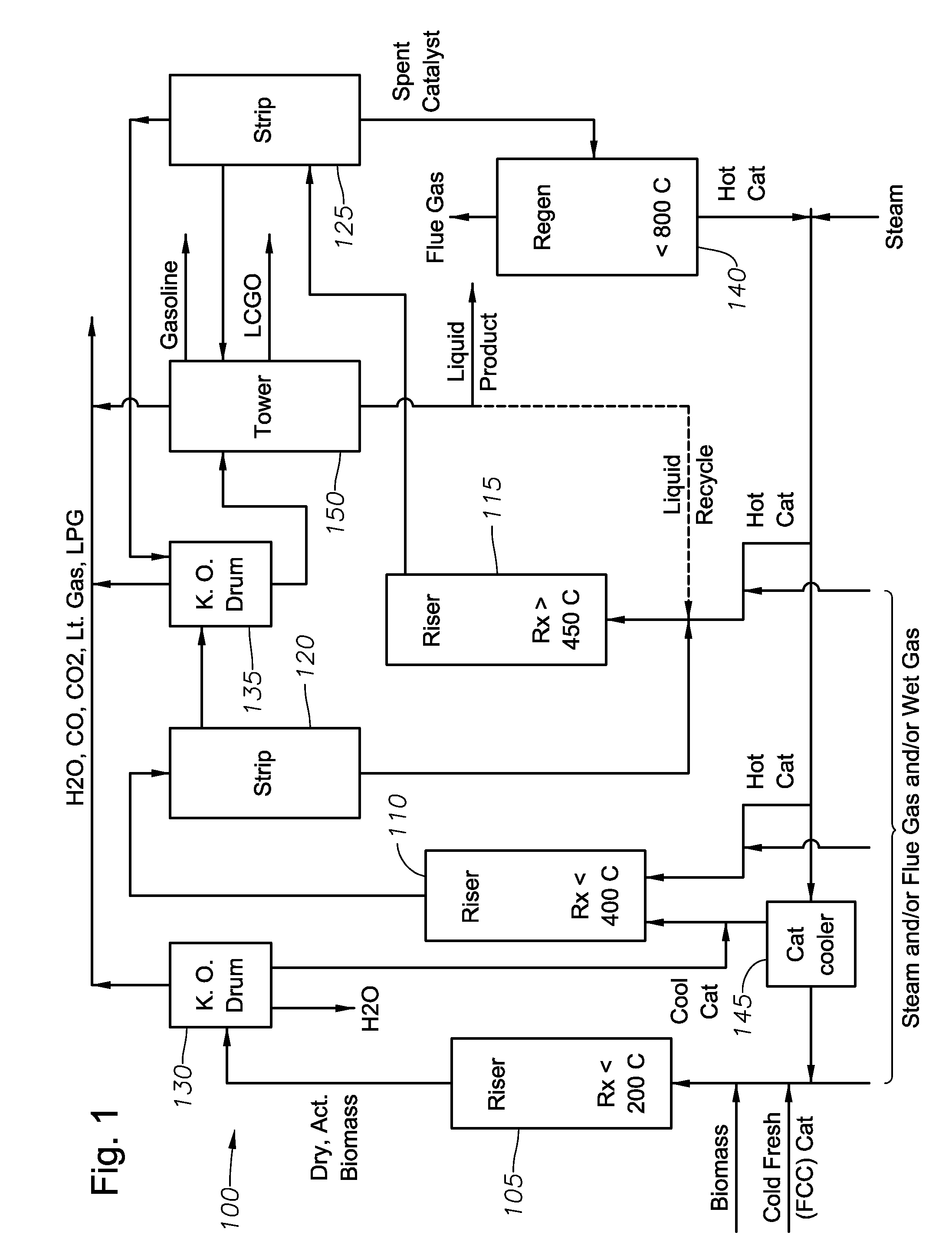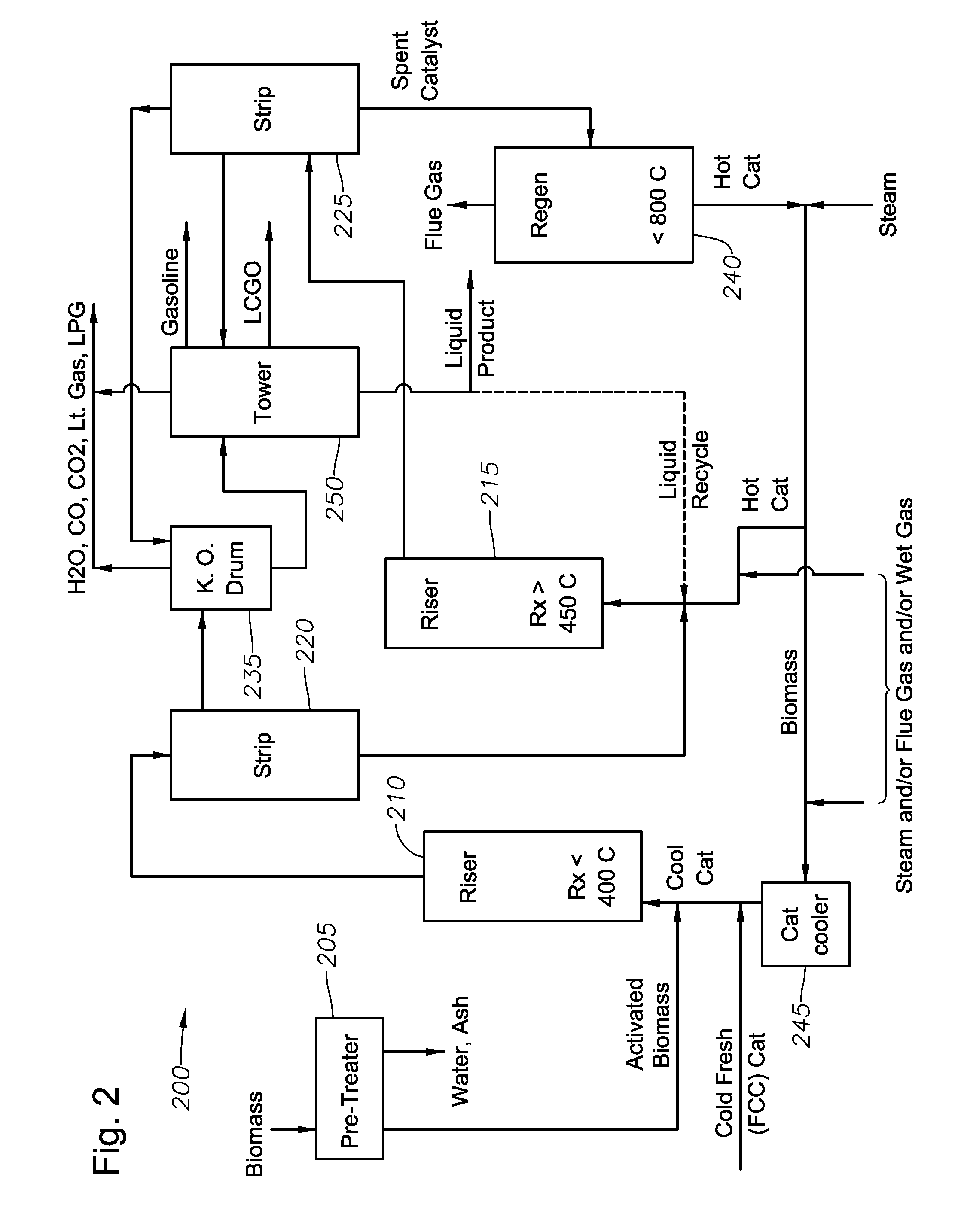Biomass conversion process
a biomass and conversion process technology, applied in biofuels, waste based fuels, organic chemistry, etc., can solve the problems of increasing capital and operating costs, raising financial and ethical issues, and low conversion efficiency, so as to improve the conversion of biomass into fuels, reduce costs, and reduce equipment costs.
- Summary
- Abstract
- Description
- Claims
- Application Information
AI Technical Summary
Benefits of technology
Problems solved by technology
Method used
Image
Examples
examples
[0068]FIGS. 1 and 2 show exemplary systems for preparing and processing biomass with catalyst. The technology also includes methods corresponding to the operation of the systems (i.e., apparatuses) corresponding to FIGS. 1 and 2. The technology also includes kits for setting up the apparatuses and carrying out the methods corresponding to FIGS. 1 and 2. The technology also includes products and intermediates, and fractions thereof, corresponding to FIGS. 1 and 2. It should be understood that one skilled in the art could modify or adapt the exemplary systems, or any other system described herein, to convert biomass into fuels or specialty chemicals. For example, catalyst, reaction vessel(s), pretreatment, and reaction conditions can be selected based upon the type of biomass and the desired product. In some embodiments, the processing can occur in a single vessel. In other embodiments, two or more vessels can be used.
[0069]In various embodiments, the intermediates include hydrocarbon...
PUM
| Property | Measurement | Unit |
|---|---|---|
| temperature | aaaaa | aaaaa |
| temperature | aaaaa | aaaaa |
| temperature | aaaaa | aaaaa |
Abstract
Description
Claims
Application Information
 Login to View More
Login to View More - R&D
- Intellectual Property
- Life Sciences
- Materials
- Tech Scout
- Unparalleled Data Quality
- Higher Quality Content
- 60% Fewer Hallucinations
Browse by: Latest US Patents, China's latest patents, Technical Efficacy Thesaurus, Application Domain, Technology Topic, Popular Technical Reports.
© 2025 PatSnap. All rights reserved.Legal|Privacy policy|Modern Slavery Act Transparency Statement|Sitemap|About US| Contact US: help@patsnap.com



